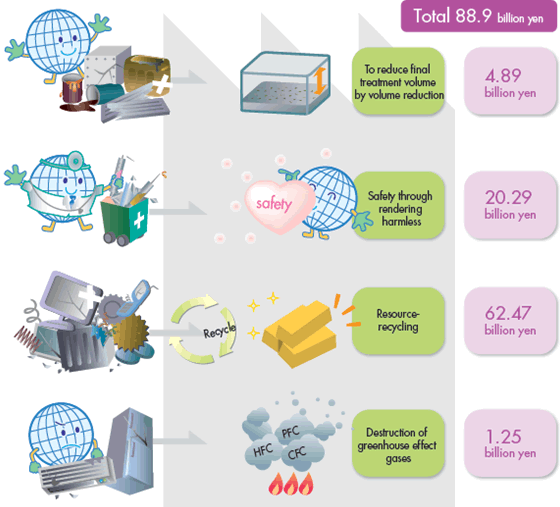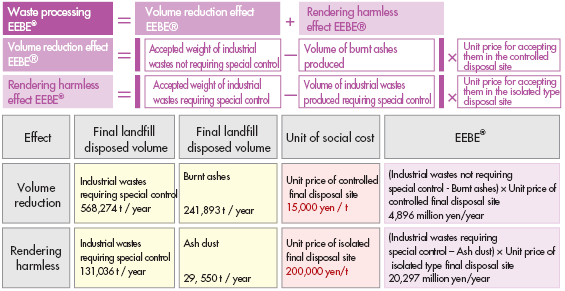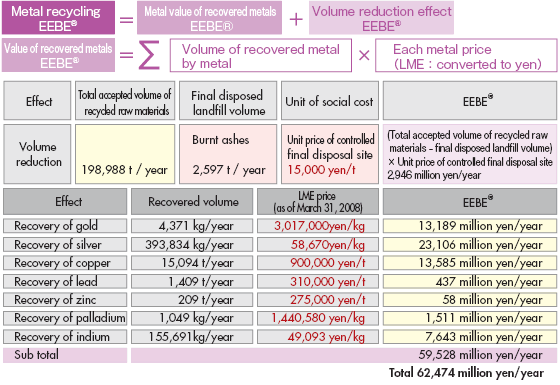Economy Report
Our Main Efforts in 2007 - External Economic Benefit Evaluation EEBE(R)
The DOWA group environmental business unit contributes to environmental conservation by recycling resources, processing wastes in a proper manner, rendering them harmless and stabilizing them. The business unit also destroys and processes CFC and HCFC that contribute to destruction of the Ozone layer and global warming utilizing heat generated by burning wastes.
We evaluated the effects of these activities on society and the environment by using the concept of External Economical Benefit Evaluation (EEBE(R)) *1.

EEBE(R) through Waste Processing
We evaluated the effects of our waste processing. By waste processing, we could reduce waste volume (volume reduction effect), extend the life of disposal site and reduce costs related to controlling hazardous wastes by rendering them harmless.

EEBE(R) through Metal Recycling
In evaluation the effects of our metal recycling, we included both the metal value of recovered metals (calculated using LME price as international quoted market price) and the effect of expanding the life of landfill disposal site through reducing the volume of waste that contain metals. The main metals to be recycled include gold, silver, copper, lead, zinc and platinum.

EEBE(R) through destruction of CFC and HCFC
By destructing CFC and HCFC, we can expect to achieve an effect of preventing destruction of the Ozone layer and global warming. We have adopted the LIME (Life-cycle Impact assessment Method based on Endpoint modeling)*2 since this year to convert these effects into EEBE(R).*3.

*1 EEBE(R) refers to numerical index that evaluates business activities by converting the effects that a company strives and achieves to reduce environmental load into a specific monetary value. This index is studied by the intermediate corporation Club ECOFACTURE consisting of the four largest auditing firms, major companies and university professors. ihttp://www.ecofacture.com/eebe/j
*2 LIME: Refers to Life-cycle Impact assessment Method based on Endpoint modeling that was developed by the Research Center for Life Cycle Assessment in partnership with LCA Project Impact Assessment Study Group (Outsourced from NEDO). It is an index that evaluates impacts of substances on the environment, considering their life-cycle, into which various impacts on human health or social capital, etc. are integrated and calculated as a lost amount of money per unit volume. At present over 1000 environmental harmful substances are input into the database.
For more information on LIME and factors, refer to gPerformance Report of Developing Techniques to Evaluate Impacts of Product Life-cycle on the Environment Entrusted by NEDO, 2002, Prepared by JEMAIh.
*3 Last year we calculated the EEBER of CFC processing on global warming gasses, based on the marginal abatement costs of those gases. However, starting this year on we will use LIME since this method includes the effect of preventing destruction of the Ozone layer. Therefore, the figures of the EEBER by CFC processing increased this year compared to last year.